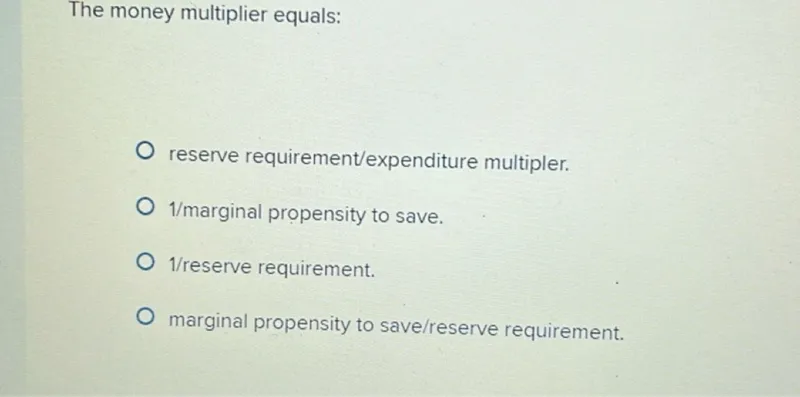Questions: The money multiplier equals: reserve requirement/expenditure multipler. 1/marginal propensity to save. 1 / reserve requirement. marginal propensity to save/reserve requirement.

Transcript text: The money multiplier equals: reserve requirement/expenditure multipler. 1/marginal propensity to save. $1 /$ reserve requirement. marginal propensity to save/reserve requirement.





